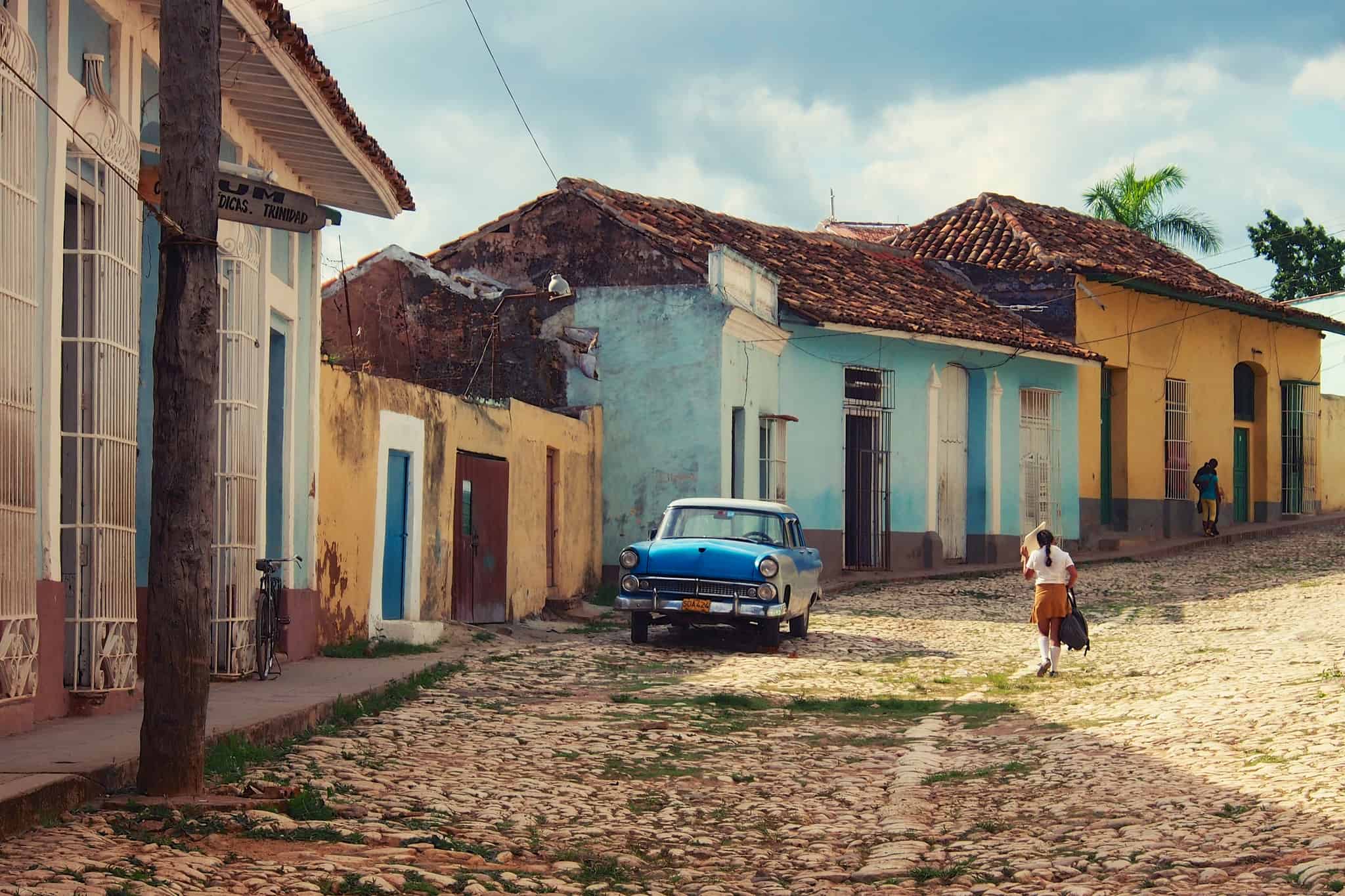By Kathy Knapp
Cuba’s major cities have rich histories that reflect their individuality and colonial roots. Whether it’s Spanish, French or indigenous, each city has different flavour. And plenty of sights, sounds and activities, too.
Havana
 Photo courtesy of GypsetJenn/Jennifer Hubbert. Photo by: Wild Whim Design + Photography, by Wade Carr
Photo courtesy of GypsetJenn/Jennifer Hubbert. Photo by: Wild Whim Design + Photography, by Wade Carr
Cuba’s capital is the heart of the country’s political, scientific and cultural life. The city offers all the modern amenities sought after by visitors, like art galleries, concert halls, theatres and museums. Old Havana is a UNESCO World Heritage site and dozens of churches, monuments, opulent mansions and museums fill the cobblestone streets. Visit Plaza de la Catedral and the fortress, Castillo de la Real Fuerza.
 Photo courtesy of GypsetJenn/Jennifer Hubbert. Photo by: Wild Whim Design + Photography, by Wade Carr
Photo courtesy of GypsetJenn/Jennifer Hubbert. Photo by: Wild Whim Design + Photography, by Wade Carr
Venture outside the of city centre and drive the famous 12-kilometre oceanside road, Malecon, which links Old Havana to the neighbourhood of Vedado, where you can see Revolution Square, The University of Havana and the José Martí Monument, with the city’s highest lookout at 138 metres above sea level. Havana boasts more than 14 kilometres of excellent beaches and two international marinas. It is only a six-kilometre journey to visit the fishing village of Cojimar, where Ernest Hemingway kept his boat.
Trinidad
 Balint Földesi via Flickr.com/balintfoeldesi (CC by 2.0)
Balint Földesi via Flickr.com/balintfoeldesi (CC by 2.0)
Often referred to as the “museum city of the Caribbean”, no other city in Cuba is as rich in colonial architecture, with it’s cobblestone streets and horse-drawn carriages. Start a tour of this port city in the picturesque Main Square, which is surrounded by museums housed in centuries-old buildings. The Square is towered over by the often photographed San Francisco de Asis Church and a short walk takes you past fully restored palatial 18th- and 19th-century homes. Just outside of the city centre you can explore the Popa Hermitage, which was built in the Spanish maritime style, to be seen from the sea.
 Alistair Kitchen, Flickr.com/alistairkitchen (CC by 2.0)
Alistair Kitchen, Flickr.com/alistairkitchen (CC by 2.0)
Take a side trip to the Valle de los Ingenios, a UNESCO World Heritage Site. Also know as the Valley of the sugar mills, you can explore the ruins of old mills and slave barracks. Head to one of the country’s best beaches, Ancon Beach, for some water fun or take a day-trip to the Topes de Collantes to enjoy a day at one of Cuba’s main ecotourism centres.
Cienfuego
 Mary Newcombe via Flickr.com/makadaka (CC by 2.0)
Mary Newcombe via Flickr.com/makadaka (CC by 2.0)
Cienfuegos sits on the shores of Jagua Bay, on the Caribbean side of Cuba. It was first settled by the French, who dubbed it “The Southern Pearl”, and today there are many examples of French and indigenous architecture to be found, like the well preserved Terry Theatre or the 19th-century funeral art at La Reina Cemetery.
 Thomas Münter via flickr.com/romtomtom (CC by 2.0)
Thomas Münter via flickr.com/romtomtom (CC by 2.0)
For a detour from the urban landscapes, visit the 94-hectare Cienfuegos Botanical Garden, founded in 1910 by Harvard University, or the Dolphin Aquarium, which is particularly popular with children. Take an exciting day trip to see the 67-metre high Martin Infierno Cave at Yaguanabo Beach or go scuba diving at the Rancho Luna Beach.
Santiago de Cuba
 Cuba Tourist Board
Cuba Tourist Board
This inviting city on Cuba’s south coast is nestled between the Caribbean Sea and Sierra Maestra Mountains. The centre of Cuba’s second-largest city is home to Cespedes Park, with the country’s principal cathedral, Metropolitain Cathedral of Santiago de Cuba, the Town Hall and 20 significant museums. The city has a rich history, a thriving musical culture and all the amenities that a visitor could want, including high quality accommodations and one of the largest conference centres in the country.
Journey outside the city to explore Baconao Park, a UNESCO World Heritage Biosphere Reserve. Hike up Gran Piedra for a breath-taking panoramic view of the area or visit the ruins of French coffee plantations. Beaches dot the Caribbean coastline both east and west of Santiago.
Camaguey
 Marika Bortolami via flickr.com/marika_bortolami (CC by 2.0)
Marika Bortolami via flickr.com/marika_bortolami (CC by 2.0)
Located in central Cuba, Camaguey is easily accessed with direct flights from Canada and daily flights from Havana. Cuba’s third largest city was moved inland less than a decade after it’s founding, to deter raiding pirates. The old town centre is a labyrinth of narrow winding streets, lined with rainbow-coloured houses and is fun to explore from a bicycle-powered rickshaw. Visit the 18th-century monument, San Juan de Dios Square, which houses a rare statue of the Holy Trinity and Holy Ghost, or the Teatro Principal, current home of the Camaguey Classic Ballet Company. The city comes alive from April to September with a variety of music, theatre and dance festivals.
 Miguel Discart via Flickr.com/miguel_discart_vrac (CC by 2.0)
Miguel Discart via Flickr.com/miguel_discart_vrac (CC by 2.0)
The area is also home to 120 kilometres of beaches. Santa Lucia Beach overlooks the northern coral reef and is well known for it’s white sand and extraordinary dive sites.
Related content on Canadian Traveller


